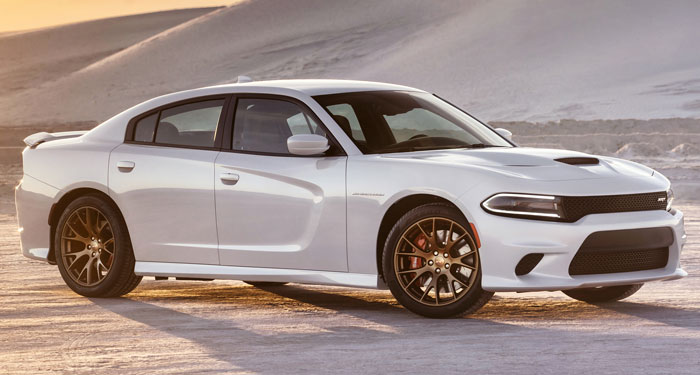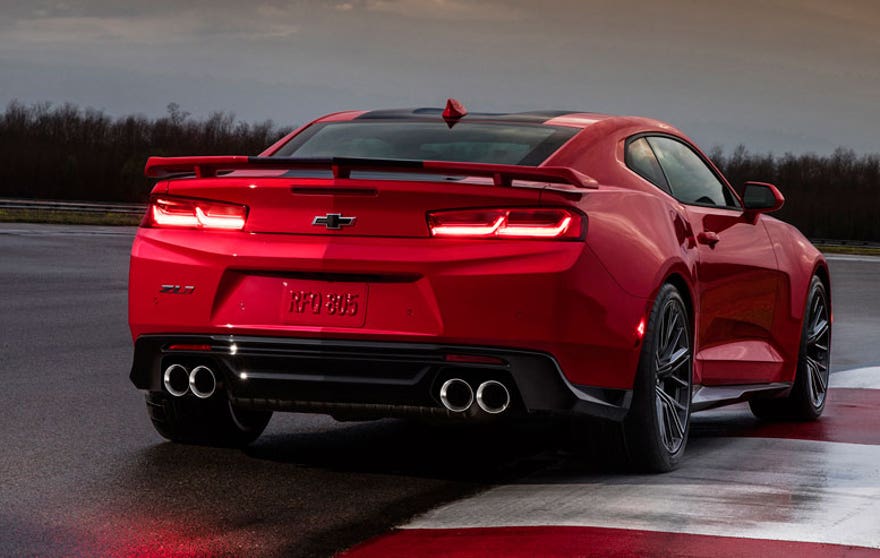Ohtobbad;n3351 said:
Also 4400 lbs, stoping and turning can't be that much fun, same weight at F-150 LOL
But it drives a little better than my F-150.
[h=1]2015 Dodge Challenger SRT Hellcat[/h] [h=2]Dodge's 707-hp Hellcat officially ushers in the age of unreason.[/h]
Instrumented Test
In the words of Ron Burgundy, “Boy, that escalated quickly.” Back in 2010, Ford was crowing about its 550-hp
Shelby GT500. Chevy one-upped that in 2011 with the 580-hp
Camaro ZL1. A few months later, Ford didn’t so much leapfrog Chevy as it did stomp its face into the mud as it ran away with its girlfriend
and its mother, introducing the 662-horse
2013 GT500. Now Dodge officially ushers in the age of unreason with the 707-hp 2015 Challenger SRT Hellcat.
Seven-hundred and seven horsepower is about as close as it gets to the output of NASA’s
Challenger. The figure makes this Challenger more powerful than all but six cars currently on the market:
the Bugatti Veyron—now available only in 1200-hp guise—the 950-hp
Ferrari LaFerrari, the
903-hp McLaren P1, the 887-hp
Porsche 918 Spyder, the 730-hp
Ferrari F12, and the 720-hp
Pagani Huayra. And, given the limited production numbers of those cars, any Challenger Hellcat will be more powerful than just about 10 cars total in the United States. Of the six factory offerings that are more powerful, just two cost less than a million bucks and only the roughly $330,000 F12 costs less than $800,000.
“That comparison is completely arbitrary,” you snivel. “The LaFerrari, P1, and 918 are bleeding-edge performance cars, and the Challenger is a nuclear-powered dinosaur.” First of all, it’s a nuclear-powered dinosaur with three-mode Bilstein shocks. So
thbbbt. Second, for the $1,339,410 you’ll save buying a Challenger Hellcat instead of a LaFerrari (you were cross-shopping the two, right?), you can definitely find someone to set up your 707-hp Dodge to dust that silly Italian car that doesn’t even have seats. One custom-molded carbon-fiber monocoque and a couple of
Protean in-hub electric motors on the front axle, and you’re most of the way there.
[TABLE="class: default, border: 0, cellpadding: 2, cellspacing: 0, width: 409"]
[TR]
[TD]

[/TD]
[/TR]
[/TABLE]
[h=3]
Rubber-Pellet Gun[/h] Well, maybe. A powered front axle would help, but you’ll want more rubber out back, too. The Hellcat’s 275/40R-20s are all too easy to reduce to the rubber pellets now thickly coating the wheelwells of our test car. It takes feet as light as a ballerina’s to get the Hellcat to 60 mph in 3.6 seconds—0.1 behind
the GT500—and through the quarter-mile in 11.7 at 126 mph—0.1-second ahead and 1-mph faster than the GT500. Dodge quotes an 11.2-second quarter-mile on the tacky surface of an NHRA-certified drag strip, but the Pirellis feel so overstressed that hitting that low ET would also require dropping tire pressures to about 10 psi. (We always conduct our acceleration tests at the manufacturer’s recommended tire pressures.) At higher speeds, though, the Hellcat runs away from everything in its price range. It hits 150 mph in 17 seconds flat, 0.8-second ahead of
the Viper and the same time as we recorded from the quickest
C6 Corvette Z06 we ever tested. Indeed, it out-accelerates just about every front-engine, rear-drive car we’ve ever hooked our test gear to. Improving on this car’s acceleration would require moving the engine behind the driver—and preferably sending power to the front wheels, too.
But delicacy can be as overrated as hooliganism is underappreciated. Roll out and then stand on it at 5 or 10 mph and you’re still shoved deep into the seatback while the rears go up in smoke. Road speed doesn’t catch up to wheel speed until 90 or so mph. Now the challenge is not moderating tire slip, but keeping the thing pointed between the ditches. The transmission is slow to respond to the paddles but very quick on its own to execute upshifts and keep the tires spinning. The supercharged 6.2-liter V-8’s well of torque is deep and wide enough to reach to the horizon—which the Hellcat-equipped Challenger itself seems likely to also reach as it lunges forward, occupants reflexively giggling and gasping.
At startup, there’s not much more menace to the Hellcat’s exhaust note than there is to the naturally aspirated SRT—certainly nothing to suggest that there are an extra 222 horsepower under this hood. And it’s astoundingly quiet inside for how loud it is outside. It’s not a pussycat, but neither is it particularly hellish. The name seems hyperbolic—or at the very least mildly offensive to some—but lower the windows and pull alongside a retaining wall, or even better, into a tunnel and lay into the throttle, and it makes sense. Suddenly, it’s the moment in a superhero movie when the villain has finally done something so wicked that the world realizes he is pure evil, and as people scream and the rain pours down and thunder crashes, he spreads his arms and screams, “I am
Hellcat!” You’re going to want to make friends with a few cops in any municipality you might drive this thing through, because there’s no way you won’t behave very badly. And the Hellcat needs to offer a window-delete option, because you’re never going to have them up. Not only that, but you’ll be tempted to tear out the trunk floor and punch a big hole in the rear bulkhead. It’s hard to get enough of this sound. Or thrust.
[TABLE="class: default, border: 0, cellpadding: 2, cellspacing: 0, width: 409"]
[TR]
[TD]

[/TD]
[/TR]
[/TABLE]
[h=3]
Oh. It Has a Steering Wheel, Too[/h] As for the other aspects of the 707-hp Dodge Challenger’s performance, the three-mode Bilstein shocks do a commendable job of taming body roll even in their least aggressive setting. Punch them up to Track mode, however, and bumps appear below you that you never knew existed before. Handling is very flat, and the steering quick and responsive but pinky light. With such a quick rack, it feels a little artificial. But this is a 4488-pound car that does an excellent job of handling its weight. The Challenger may not dive much under heavy braking, but passengers will, as the SRT hauls down from 70 mph in just 154 feet.
So it’s not a one-trick ’cat. But it’s so good at its best trick that it’s easy to overlook the others. It’s easy and fun. Really fun.
[h=3]
Fun Fast Facts:[/h] Priced by the Pound:
Of course you wouldn’t buy a car by the pound. So it doesn’t matter that the Challenger Hellcat costs $13.50 per pound, while the LaFerrari is $437.50. But you might consider these other price and weight indices:
[TABLE="class: default, border: 0, cellpadding: 2, cellspacing: 0"]
[TR]
[TD="width: 212"]
Pounds per Horsepower:
Dodge Challenger SRT Hellcat: 6.3
Ferrari F12berlinetta: 5.2
Ferrari LaFerrari: 3.4
McLaren P1: 3.7
Pagani Huayra: 4.4
Porsche 918 Spyder: 4.2
[/TD]
[TD] [/TD]
[TD="width: 212"]
Dollars per Horsepower:
Dodge Challenger SRT Hellcat: $85.70
Ferrari F12berlinetta: $447.04
Ferrari LaFerrari: $1473.68
McLaren P1: $1273.53
Pagani Huayra: $2000.00
Porsche 918 Spyder: $956.00
[/TD]
[/TR]
[/TABLE]
View Photos














